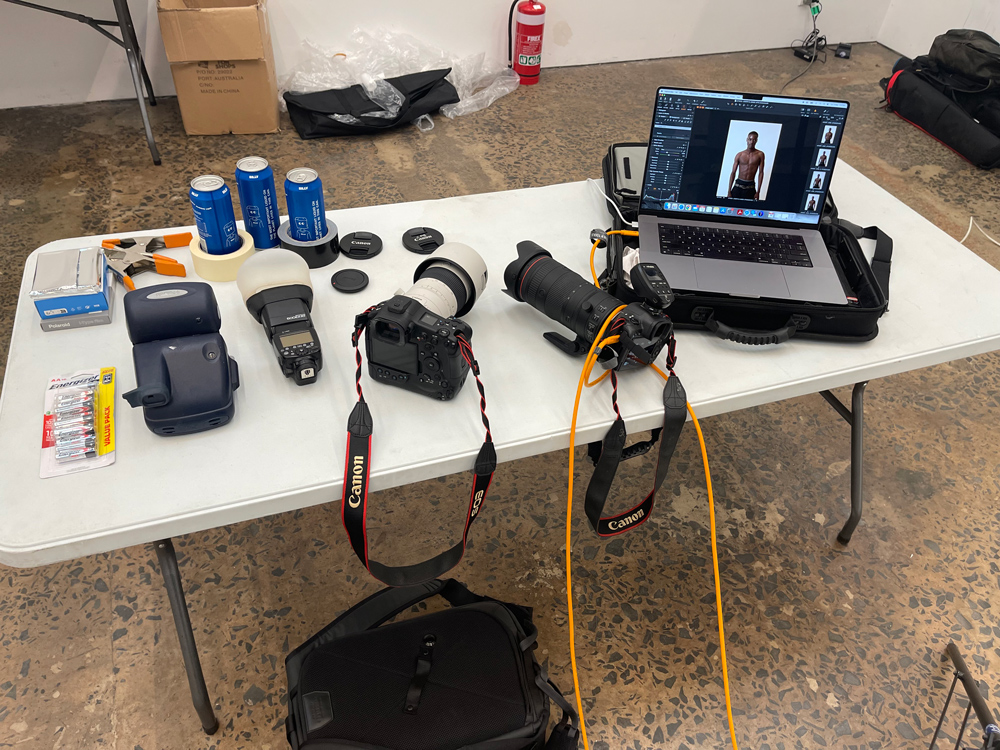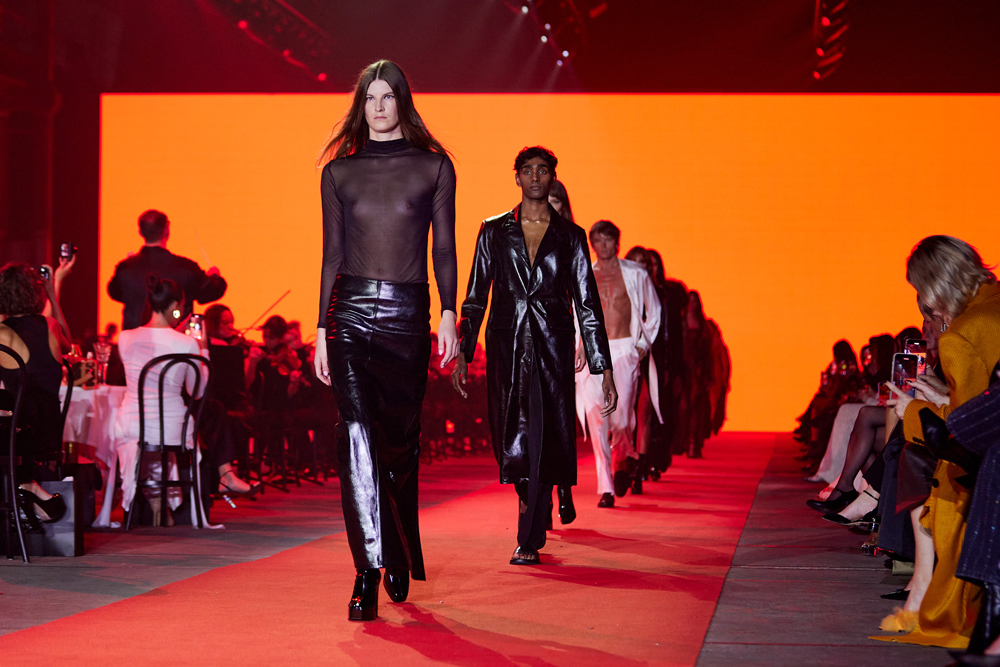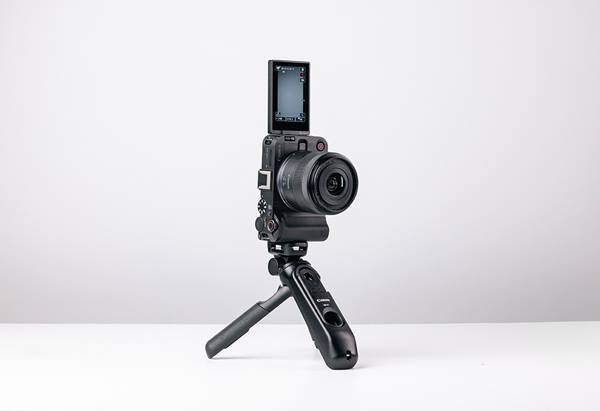- Mastering Fashion & Runway Photography: Gear, Settings & Pro Techniques from the Fashion Runway
-

Fashion runway photography demands a distinct blend of timing, instinct, technical mastery, and preparation. It's one of the most high-pressure environments a photographer can step into - fast-moving subjects, complex lighting setups, and moments that exist for just a second.
Since 2018, photographer Maria Alzate has had the privilege of photographing Australian Fashion Runway (AFR), documenting everything from high-impact runway moments to the charged energy backstage and the expressive individuality of street style. With years of experience capturing shows from Australia’s most influential designers - Carla Zampatti, Bianca Spender, Alemais, Michael Lo Sordo, Aje, Camilla, and more - she has developed a toolkit and workflow that help her work fast, stay focused, and deliver consistently great images across all facets of the event.
Whether you're just starting out or looking to sharpen your skills, this guide is designed to help you navigate the technical and creative demands of runway photography - covering gear, settings, shooting techniques, and pro insights Maria has learned on the job.

When shooting runway, your gear isn’t just about image quality - it’s about responsiveness, durability, and low-light performance. You often don’t get a second chance, so your kit has to deliver instantly and consistently.
Previously, Maria shot with the Canon EOS R3 and this year with the Canon EOS R1, both of which are built for speed, reliability, and precision in challenging environments.
The Canon EOS R1 is Canon’s flagship mirrorless camera, introduced in 2024 as a next-gen evolution of the EOS R3. Built with a new 24.2 MP full-frame stacked CMOS sensor and a dual DIGIC Accelerator image processor, it’s engineered for situations where both image quality and speed are non-negotiable.
What makes the EOS R1 so powerful for runway photography?
• Unrivalled Speed: With blackout-free continuous shooting at up to 40 fps using the electronic shutter, Maria captures every stride, fabric movement, and glance with incredible precision. There's also a 120 fps RAW burst mode (at reduced resolution) for ultra-high-speed sequences.
• Intelligent Autofocus: Canon’s Dual Pixel CMOS AF II system, now enhanced with deep-learning AI, offers subject detection and tracking that’s context-aware - it can distinguish not just human faces and eyes, but also clothing, body orientation, and motion patterns. In runway settings, this helps enormously with off-centre compositions or fast crosswalks.
• Low Light Performance: With a native ISO range of 100-102,400 (expandable to 50-204,800), and excellent noise control even in the ISO 3200-6400 range, the EOS R1 handles fashion runway’s inconsistent lighting with ease. Paired with fast RF lenses, it gives photographers the confidence to work without flash in even the darkest backstage environments.
• Real-Time Viewfinder Feedback: The EOS R1’s OLED EVF displays real-time exposure, white balance, and focus previews with no lag, allowing Maria to make in-the-moment adjustments and trust what she sees.
For reliability across long days, dual CFexpress Type B card slots, a reinforced body with advanced weather sealing, and a high-capacity LP-E19 battery keep it ready for whatever the day brings - whether in the pit or running between venues in the rain.
Maria’s lens setup is focused on versatility, reach, and speed. A core combination includes the RF 24-105mm f/2.8L IS USM Z and RF 70-200mm f/2.8L IS USM. These two lenses cover the full range of compositions needed on the runway: the 24-105mm handles wider frames, three-quarter length shots, and editorial compositions, while the 70-200mm is ideal for full-length model walks, detail captures, and compressed perspectives from the back of the pit.
The RF 24-105mm f/2.8 is a particularly smart choice for fashion runway: its consistent f/2.8 aperture allows for low-light flexibility, while the added control ring offers photographers the option to enable custom assignments like aperture adjustment or ISO on the fly - a major benefit when shooting one-handed in crowded environments.
She also carries a 35mm prime for backstage detail work or stylised street style photography. A lightweight monopod is essential for runway - it helps keep fatigue at bay during long shows and ensures shots are sharp. Maria rotates through labelled CFexpress cards to ensure fast buffer clearing and safe backups.
Camera settings for runway are all about balance - freezing motion while compensating for low or mixed light, with no time for second guesses.
For those starting out, automated features reduce stress and allow focus on timing and framing. Recommended:
• TV (Shutter Priority) Mode: Set shutter to a minimum of 1/420s or faster.
• Auto ISO: Ideal for changing lighting between model walks.
• Auto White Balance (AWB): Canon’s EOS R-series cameras are highly accurate even under spotlights or mixed lighting.
• Servo AF + Eye Tracking:Enable tracking, and use a customisable AF-ON back button for quick override.
• Shoot in RAW: Essential for adjusting exposure, skin tone, and contrast in post.
As confidence grows, move to Manual (M) Mode for creative control. Mastering ISO, shutter speed, aperture, and white balance - and how they interact - helps shape your final image.
Settings reflect intent. For editorial content, Maria may opt for razor-sharp, high-contrast images or use slower shutter speeds for intentional motion blur. If shooting for clients, she aligns technical choices with the brief - whether consistent exposures or expressive visuals.
Manual control isn't just about precision - it's about intentionality. The more instinctive your camera handling, the more freedom you have to frame and capture compelling moments.
Maria recommends memorising your camera layout - light shifts frequently between looks and finales, and fast adjustments are essential.
• Shutter Speed: 1/500s
• Aperture: f/4
• ISO: 2500
• White Balance: AWB, pre-tested with white card
• Focus Mode: Servo AF with toggling between eye tracking and zone focus
• Drive Mode: High-speed continuous (30 fps)

Fashion shows frequently push cameras to the limit. Lighting setups often combine harsh spotlights, coloured gels, limited spread, LED panels, and projections - sometimes all in one show. Flash or strobe use is prohibited in the media pit.
Dark stages and black garments can cause underexposure. White or reflective materials can blow highlights.
Maria’s approach: use a white card pre-show to test metering, and manually adjust Kelvin temperature as needed. Post-review is vital to correct RAWs, especially for skin tones affected by colour washes. Adjust white balance or contrast subtly to retain natural tones.

Runway shooting is all about rhythm. Maria anticipates the model's peak pose - upright, balanced stride, garment flowing - and times shots to footfalls.
She shoots in 3-5 frame bursts when the model hits the light mark. Too many frames overload cards; too few risk missing the shot.
Compositionally, she ensures the full garment is in frame, watches hand placement, and remains alert to surprises - finale walks, spins, or emotional designer exits.
Even pros slip up. Watch out for:
• Awkward Poses: Mid-step shots showing the sole can ruin posture.
• Unbalanced Stance: Ensure both feet are grounded for a strong silhouette.
• Eyes Closed: Take extra frames to avoid unusable shots.
• Blurry Shots: Recheck focus and shutter speed.
• Poor Garment Display: Never crop out key parts of the outfit.

Backstage access is a privilege. It’s a high-pressure environment and demands professionalism.
Maria suggests introducing yourself to the show producer, designer, and backstage manager. Stay light on your feet, be respectful, and only step forward when it matters.
Use a fast prime or a 24-70mm to 24-105mm zoom lens for flexibility.
Fashion photography is never just about the clothes. It’s about energy, identity, emotion, and capturing a cultural moment. Whether you're in the photo pit or behind the scenes, your job is to translate movement, colour, and story into a single, impactful frame.
Having the right gear – especially a camera like the Canon EOS R1 – makes the technical side effortless, freeing you up to let creativity and instinct lead the way. The rest comes down to experience, patience, and your ability to see the story before it unfolds.
So whether you're getting ready for your first fashion week or simply refining your skills, remember this: shoot with purpose, stay open to spontaneity, and don't be afraid to make mistakes. That's how you grow – and how the magic happens.
Follow Maria to see more of her work:
• Instagram: @alzatephotography
• Website/Portfolio: MARIA ALZATE

Discover expert fashion photography tips from Auckland-based photographer Anupam Singh. Learn how to master camera settings, lighting, location choices and more for standout fashion shoots.

Discover the Canon EOS R50 V's top features through creator Moses' experience. Explore 4K 60P video, Canon Log 3, seamless autofocus and more in this hands-on review.

Discover the best cameras, lenses, and accessories for video production. From vlogging to professional filmmaking, explore top recommendations and expert tips to enhance your video quality.